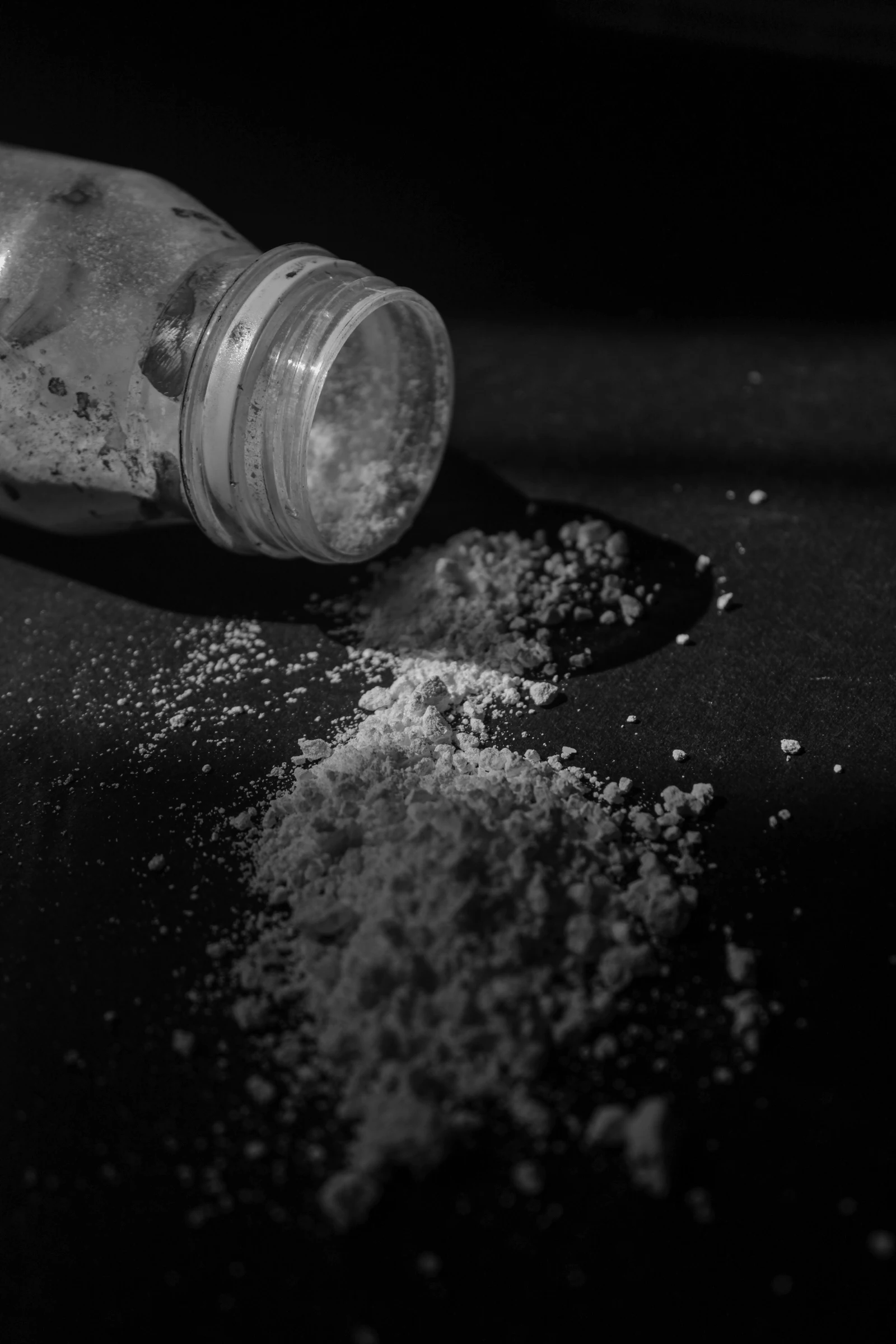What Does Fentanyl Smell Like? Identifying Illicit Drug Use
Medically Reviewed By:
Written By:
Updated On: May 12, 2025
Last Medically Reviewed on: May 12, 2025

Table of Contents
Key Points
- Fentanyl is a potent opioid drug that’s often laced into illicit drugs like heroin and cocaine.
- Fentanyl has no smell, taste, or color, making it difficult to identify.
- Because of fentanyl’s potency and its presence in other drugs, there’s a high risk of accidental overdose.
- The only reliable way to detect fentanyl in illicit drugs is with fentanyl test strips, but this method isn’t 100% accurate every time.
In recent years, it’s become more common to see illicit drugs like cocaine or heroin laced with fentanyl, leading to a spike in fentanyl-related overdoses. More than 107,000 people lost their lives to a drug overdose in 2023, with nearly 70% of those deaths attributed to opioids like fentanyl.[1]
Though more people are becoming aware of the risks of fentanyl-laced drugs, it’s still difficult to identify them. If you’re wondering “what does fentanyl smell like,” it’s important to know that the drug is odorless, tasteless, and difficult to identify. Learn more about fentanyl and how to identify it, as well as how you can seek treatment for addiction.
What Is Fentanyl?
Fentanyl is a powerful prescription opioid that’s derived from morphine, but 50 to 100 times stronger. It’s typically marketed under the brand Duragesic and used to treat severe pain, such as pain related to palliative care for cancer patients. It’s manufactured in several forms, including pills, sprays, gel patches, sublingual films, liquids, and lollipops.
There’s a market for illicit fentanyl, however. It’s easy to produce in clandestine labs, causing drug dealers to lace other illicit drugs with it. Fentanyl has been identified in illicit supplies of cocaine, heroin, meth, and counterfeit opioid pills, often without the person knowing.[2] Because of its high potency for a small amount, there’s a high risk of overdose, especially if the person isn’t aware that fentanyl is in the product.
What Does Fentanyl Smell Like?
Fentanyl is a lab-created synthetic opioid with no distinct smell or taste.[3] It’s found in a fine white or off-white powder in its pure form, which is easy to mix into other drugs. There’s no scent to it, even when it’s smoked, so it’s impossible to identify by smell alone.
How to Identify Fentanyl
Fentanyl has no smell or odor and no taste. While most fentanyl is white or off-white, that’s not a reliable identifier since many drugs are white or off-white. This is why fentanyl-laced drugs are so insidious and often lead to accidental overdoses.
The only reliable way to identify fentanyl in another drug, or identify an unknown counterfeit product with no manufacturer information, is with a fentanyl test strip. These small, portable test strips can test a substance before use. The test is simple: The drug is dissolved in water, and the test strip is inserted into the liquid. It delivers results in just a few minutes to indicate if fentanyl is present.
The majority of fentanyl test strips on the market are 96% to 100% accurate in detecting the presence of fentanyl and at least 10 fentanyl analogs.[4] However, there are some limitations. User error can cause inaccurate or uninterpretable results. There’s also evidence that test strips can cross-react with certain levels of methamphetamine and diphenhydramine, leading to false positives if the sample isn’t adequately diluted.[5] Fentanyl test strips don’t measure the quantity or potency, either. They only detect the presence of fentanyl or its analogs.
Signs of a Fentanyl Overdose
It only takes a small amount of fentanyl to cause an overdose. Some of the signs of fentanyl overdose include:[6]
- Stupor
- Changes in pupil size
- Cold and clammy skin
- Blue discoloration of the skin (cyanosis)
- Respiratory failure
- Coma
Fentanyl overdose can turn deadly in a matter of minutes. If you suspect someone is overdosing, it’s crucial to call 911 immediately. If you have naloxone, you can administer it to try to reverse the overdose. It may take multiple doses to reverse respiratory depression, which you can try every 2 to 3 minutes until the person responds or emergency medical assistance arrives.
How to Tell If Someone Is Using Fentanyl
Because fentanyl is hard to detect, it’s difficult to tell if someone you know is using drugs. Behavior and signs of drug use are better indicators, which include:
- Changes in pupils
- Sleep changes
- Mood swings or irritability
- Changes in the friend group
- Poor hygiene
- Appearing fearful or paranoid for no reason
- Secretive behavior
- Presence of drug paraphernalia like pipes or burnt spoons
If you notice the warning signs of drug abuse in a loved one, it’s important to address your concerns and potentially hold an intervention. It’s best to approach the subject with compassion, not judgment, anger, or accusation, and offer support and guidance when they’re ready.
Treating Fentanyl Abuse or Addiction
Whether fentanyl is taken deliberately or unknowingly from fentanyl-laced drugs, it’s an extremely potent drug that can build tolerance and dependence quickly. This means it takes higher and higher doses to achieve the same effects, and the body gets used to the presence of the drug. If you stop taking it, intense withdrawal symptoms occur that increase the risk of relapse.
Fentanyl withdrawal symptoms may include:[7]
- Nausea
- Vomiting
- Diarrhea
- Stomach cramps
- Muscle pain
- Bone and joint pain
- Chills
- Tearing eyes
- Runny nose
- Insomnia
- Fever
- Sweating
- Yawning
- High blood pressure
- Agitation
- Depression
- Anxiety
- Intense cravings
Though opioid withdrawal is not usually considered life threatening, it can be extremely difficult to withstand on your own. It’s not advised to try to quit fentanyl at home. Instead, you should enter medical detox to have the support and supervision of a full medical team to manage symptoms, prevent complications, and keep you as safe and comfortable as possible. This is especially important if you use multiple substances (polydrug or polysubstance abuse) that involve fentanyl, as the withdrawal symptoms can be unpredictable.
Detox can help you undergo withdrawal and build a foundation for drug addiction treatment, but it’s not enough to treat addiction on its own. Once detox is complete, it’s crucial to transition into a comprehensive addiction treatment program on an inpatient or outpatient basis to address the underlying causes of substance abuse. Treatment plans are individualized based on your history, treatment goals, challenges, and substance use, but they often include a combination of individual therapy, group counseling, and behavioral therapies like cognitive behavioral therapy (CBT) or dialectical behavior therapy (DBT).
Seek Help for Fentanyl Addiction
Fentanyl can’t be identified using senses alone, and test strips aren’t without possible error or false positives. The only reliable way to avoid the risks of fentanyl is to abstain from illicit drug use, which may require comprehensive addiction treatment.
Frequently Asked Questions
How Can I Protect Myself or a Loved One from Fentanyl Overdose?
The only way to completely protect yourself or a loved one from a fentanyl overdose is to abstain from illicit drug use. However, testing drugs with fentanyl test strips can help prevent accidental overdoses from fentanyl-laced substances. You should also carry naloxone (Narcan) to respond to an overdose quickly.
What Does Fentanyl Look Like?
Pharmaceutical fentanyl comes in patches, lozenges, injectables, liquids, pills, and lollipops. Illicit fentanyl is usually a white or off-white powder that’s pressed into fake pills or mixed into other illicit drugs like heroin, cocaine, or meth.
How Is Fentanyl Used Recreationally?
Illicit fentanyl is often snorted, smoked, injected, or taken as counterfeit pills. Many people don’t realize fentanyl is present in the drugs they’re taking, leading to accidental overdoses.
How Can You Tell If a Drug Contains Fentanyl?
The only reliable method to detect fentanyl is fentanyl test strips, which can detect its presence in pills or powders. While this method is highly accurate, it’s not perfect. Test strips can’t measure the amount or potency of fentanyl, either. They just detect its presence.
There is a Better Way to Live. It's Time to Get the Help You Deserve.
Take the first step in getting your life back. Speak with our admissions team today.Sources
[1] Overdose deaths decline, fentanyl threat looms. DEA. (n.d.-a). Retrieved from https://www.dea.gov/press-releases/2024/12/16/overdose-deaths-decline-fentanyl-threat-looms#:~:text=More%20than%20107%2C000%20people%20lost,to%20opioids%20such%20as%20fentanyl on 2025, May 1.
[2,3] Facts about fentanyl. DEA. (n.d.-a). Retrieved from https://www.dea.gov/resources/facts-about-fentanyl on 2025, May 1.
[4,5] Nmhealth. (n.d.-b). Retrieved from https://www.nmhealth.org/publication/view/general/6756/ on 2025, May 1.
[6] Regina, A. C. (2025, January 22). Opioid toxicity. StatPearls [Internet]. Retrieved from https://www.ncbi.nlm.nih.gov/books/NBK470415/ on 2025, May 1.
[7] Shah, M. (2023, July 21). Opioid withdrawal. StatPearls [Internet]. Retrieved from https://www.ncbi.nlm.nih.gov/books/NBK526012/ on 2025, May 1.



